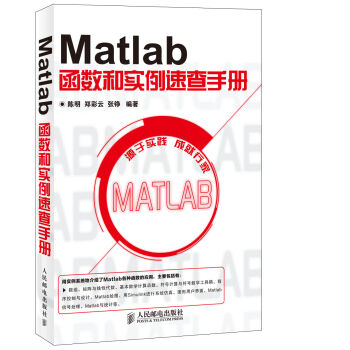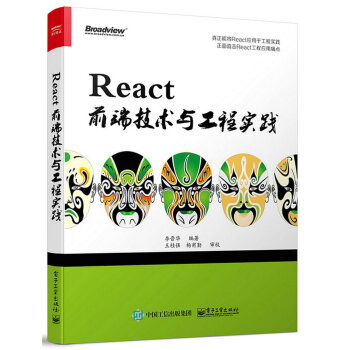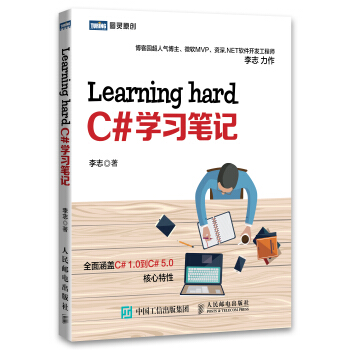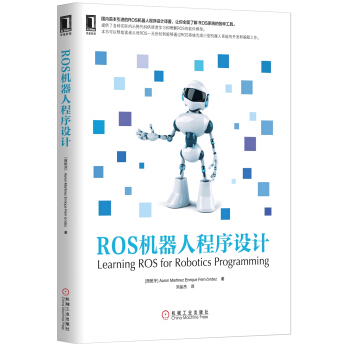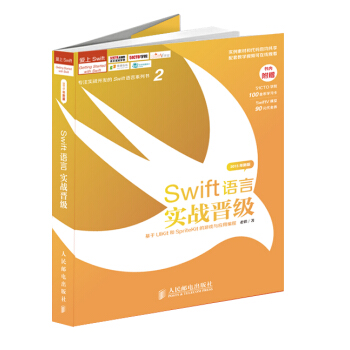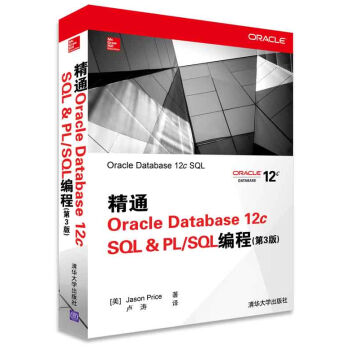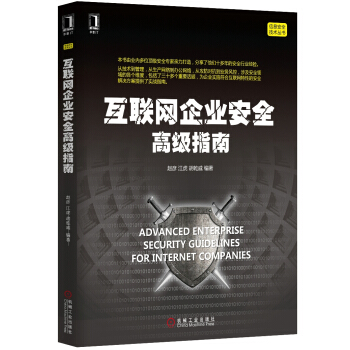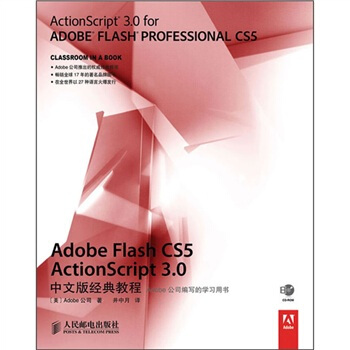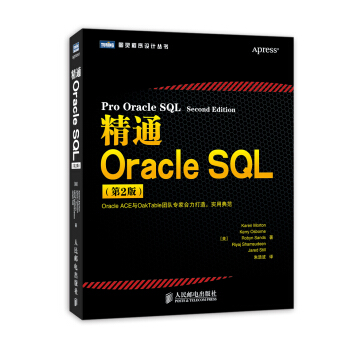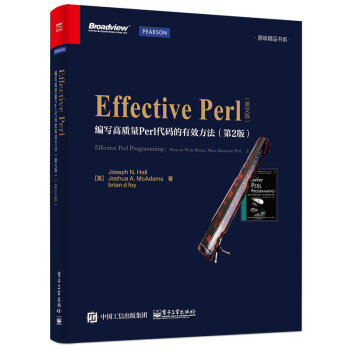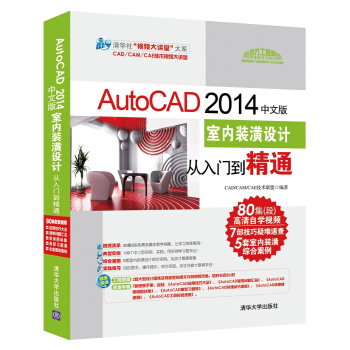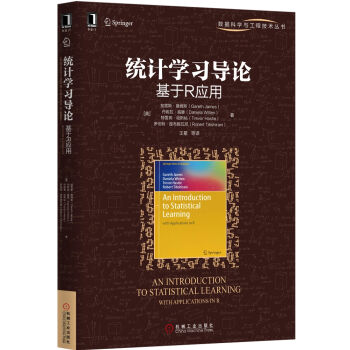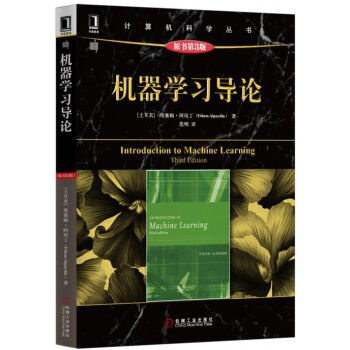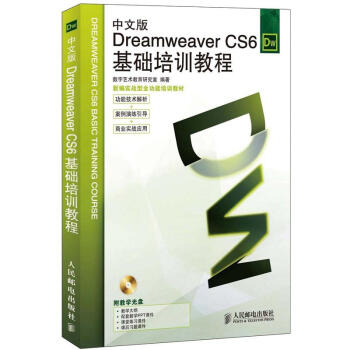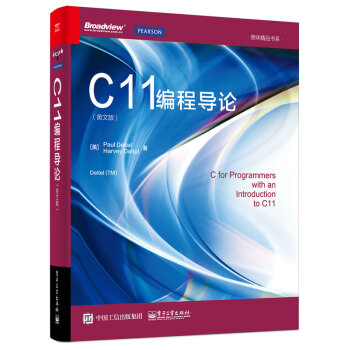

具體描述
産品特色
內容簡介
《C11編程導論英文版》沿用瞭Deitel特色的“程序實況解說”,深入探討瞭C語言和C標準庫。通過完整的語法著色、代碼高亮、代碼演練和程序輸齣,全麵地介紹瞭測試程序的概念。《C11編程導論英文版》匯集約5000行C代碼和數百個開發技巧,將幫助你構建強大的應用程序。《C11編程導論英文版》的內容包括構建自定義數據結構、標準庫等;並選擇瞭C11標準的一些新特性,如多綫程來幫助你為目前的多核係統編寫高性能的應用程序;C語言安全編程部分展示瞭如何讓你編寫的程序具有更好的魯棒性,不易受到攻擊。《C11編程導論英文版》適閤具有一定高級語言編程背景的程序員閱讀。
作者簡介
Paul Deitel,Deitel & Associates有限公司的CEO兼CTO,畢業於麻省理工學院,主修信息技術。在Deitel & Associate有限公司公司工作的過程中,他已經為行業、政府機關和軍隊客戶提供瞭數百節編程課程,這些客戶包括思科、IBM、西門子、Sun Microsystems、戴爾、Fidelity、肯尼迪航天中心、美國國傢強風暴實驗室、白沙導彈試驗場、Rogue Wave Software、波音公司、SunGard Higher Education、北電網絡公司、彪馬、iRobot、Invensys等。他和本書的閤著者Harvey M. Deitel博士是全球暢銷編程語言教材、專業書籍和視頻的作者。Harvey Deitel博士,Deitel & Associates有限公司的董事長和首席戰略官,在計算機領域中擁有50多年的經驗。Deitel博士獲得瞭麻省理工學院電子工程(學習計算)的學士和碩士學位,並獲得瞭波士頓大學的數學博士學位(學習計算機科學)。他擁有豐富的行業和大學教學經驗,在1991年與兒子Paul Deitel創辦Deitel & Associates有限公司之前,他是波士頓大學計算機科學係的主任並獲得瞭終身任職權。Deitel博士為很多大公司、學術研究機構、政府機關和軍方提供瞭數百場專業編程講座。Deitel的齣版物獲得瞭國際上的認可,並被翻譯為繁體中文、簡體中文、韓語、日語、德語、俄語、西班牙語、法語、波蘭語、意大利語、葡萄牙語、希臘語、烏爾都語和土耳其語。
目錄
前言1 Introduction
1.1 Introduction
1.2 The C Programming Language
1.3 C Standard Library
1.4 C++ and Other C-Based Languages
1.5 Typical C Program Development Environment
1.5.1 Phase 1: Creating a Program
1.5.2 Phases 2 and 3: Preprocessing and Compiling a C Program
1.5.3 Phase 4: Linking
1.5.4 Phase 5: Loading
1.5.5 Phase 6: Execution
1.5.6 Standard Input, Standard Output and Standard Error Streams
1.6 Test-Driving a C Application in Windows, Linux and Mac OS X
1.6.1 Running a C Application from the Windows Command Prompt
1.6.2 Running a C Application Using GNU C with Linux
1.6.3 Running a C Application Using GNU C with Mac OS X
1.7 Operating Systems
1.7.1 Windows―A Proprietary Operating System
1.7.2 Linux―An Open-Source Operating System
1.7.3 Apple’s Mac OS X; Apple’s iOS ? for iPhone ? , iPad ? and iPod Touch ? Devices
1.7.4 Google’s Android
2 Introduction to C Programming
2.1 Introduction
2.2 A Simple C Program: Printing a Line of Text
2.3 Another Simple C Program: Adding Two Integers
2.4 Arithmetic in C
2.5 Decision Making: Equality and Relational Operators
2.6 Secure C Programming
3 Control Statements: Part I
3.1 Introduction
3.2 Control Structures
3.3 The if Selection Statement
3.4 The if … else Selection Statement
3.5 The while Repetition Statement
3.6 Class Average with Counter-Controlled Repetition
3.7 Class Average with Sentinel-Controlled Repetition
3.8 Nested Control Statements
3.9 Assignment Operators
3.10 Increment and Decrement Operators
3.11 Secure C Programming
4 Control Statements: Part II
4.1 Introduction
4.2 Repetition Essentials
4.3 Counter-Controlled Repetition
4.4 for Repetition Statement
4.5 for Statement: Notes and Observations
4.6 Examples Using the for Statement
4.7 switch Multiple-Selection Statement
4.8 do … while Repetition Statement
4.9 break and continue Statements
4.10 Logical Operators
4.11 Confusing Equality ( == ) and Assignment ( = ) Operators
4.12 Secure C Programming
5 Functions
5.1 Introduction
5.2 Program Modules in C
5.3 Math Library Functions
5.4 Functions
5.5 Function Definitions
5.6 Function Prototypes: A Deeper Look
5.7 Function Call Stack and Stack Frames
5.8 Headers
5.9 Passing Arguments By Value and By Reference
5.10 Random Number Generation
5.11 Example: A Game of Chance
5.12 Storage Classes
5.13 Scope Rules
5.14 Recursion
5.15 Example Using Recursion: Fibonacci Series
5.16 Recursion vs. Iteration
5.17 Secure C Programming
6 Arrays
6.1 Introduction
6.2 Arrays
6.3 Defining Arrays
6.4 Array Examples
6.5 Passing Arrays to Functions
6.6 Sorting Arrays
6.7 Case Study: Computing Mean, Median and Mode Using Arrays
6.8 Searching Arrays
6.9 Multidimensional Arrays
6.10 Variable-Length Arrays
6.11 Secure C Programming
7 Pointers
7.1 Introduction
7.2 Pointer Variable Definitions and Initialization
7.3 Pointer Operators
7.4 Passing Arguments to Functions by Reference
7.5 Using the const Qualifier with Pointers
7.5.1 Converting a String to Uppercase Using a Non-Constant Pointer to Non-Constant Data
7.5.2 Printing a String One Character at a Time Using a Non-Constant Pointer to Constant Data
7.5.3 Attempting to Modify a Constant Pointer to Non-Constant Data
7.5.4 Attempting to Modify a Constant Pointer to Constant Data
7.6 Bubble Sort Using Pass-by-Reference
7.7 sizeof Operator
7.8 Pointer Expressions and Pointer Arithmetic
7.9 Relationship between Pointers and Arrays
7.10 Arrays of Pointers
7.11 Case Study: Card Shuffling and Dealing Simulation
7.12 Pointers to Functions
7.13 Secure C Programming
8 Characters and Strings
8.1 Introduction
8.2 Fundamentals of Strings and Characters
8.3 Character-Handling Library
8.3.1 Functions isdigit , isalpha , isalnum and isxdigit
8.3.2 Functions islower , isupper , tolower and toupper
8.3.3 Functions isspace , iscntrl , ispunct , isprint and isgraph
8.4 String-Conversion Functions
8.4.1 Function strtod
8.4.2 Function strtol
8.4.3 Function strtoul
8.5 Standard Input/Output Library Functions
8.5.1 Functions fgets and putchar
8.5.2 Function getchar
8.5.3 Function sprintf
8.5.4 Function sscanf
8.6 String-Manipulation Functions of the String-Handling Library
8.6.1 Functions strcpy and strncpy
8.6.2 Functions strcat and strncat
8.7 Comparison Functions of the String-Handling Library
8.8 Search Functions of the String-Handling Library
8.8.1 Function strchr
8.8.2 Function strcspn
8.8.3 Function strpbrk
8.8.4 Function strrchr
8.8.5 Function strspn
8.8.6 Function strstr
8.8.7 Function strtok
8.9 Memory Functions of the String-Handling Library
8.9.1 Function memcpy
8.9.2 Function memmove
8.9.3 Function memcmp
8.9.4 Function memchr
8.9.5 Function memset
8.10 Other Functions of the String-Handling Library
8.10.1 Function strerror
8.10.2 Function strlen
8.11 Secure C Programming
9 Formatted Input/Output
9.1 Introduction
9.2 Streams
9.3 Formatting Output with printf
9.4 Printing Integers
9.5 Printing Floating-Point Numbers
9.6 Printing Strings and Characters
9.7 Other Conversion Specifiers
9.8 Printing with Field Widths and Precision
9.9 Using Flags in the printf Format Control String
9.10 Printing Literals and Escape Sequences
9.11 Reading Formatted Input with scanf
9.12 Secure C Programming
10 Structures, Unions, Bit Manipulation and Enumerations
10.1 Introduction
10.2 Structure Definitions
10.2.1 Self-Referential Structures
10.2.2 Defining Variables of Structure Types
10.2.3 Structure Tag Names
10.2.4 Operations That Can Be Performed on Structures
10.3 Initializing Structures
10.4 Accessing Structure Members
10.5 Using Structures with Functions
10.6 typedef
10.7 Example: High-Performance Card Shuffling and Dealing Simulation
10.8 Unions
10.8.1 Union Declarations
10.8.2 Operations That Can Be Performed on Unions
10.8.3 Initializing Unions in Declarations
10.8.4 Demonstrating Unions
10.9 Bitwise Operators
10.9.1 Displaying an Unsigned Integer in Bits
10.9.2 Making Function displayBits More Scalable and Portable
10.9.3 Using the Bitwise AND, Inclusive OR, Exclusive OR and Complement Operators
10.9.4 Using the Bitwise Left- and Right-Shift Operators
10.9.5 Bitwise Assignment Operators
10.10 Bit Fields
10.11 Enumeration Constants
10.12 Secure C Programming
11 File Processing
11.1 Introduction
11.2 Files and Streams
11.3 Creating a Sequential-Access File
11.4 Reading Data from a Sequential-Access File
11.5 Random-Access Files
11.6 Creating a Random-Access File
11.7 Writing Data Randomly to a Random-Access File
11.8 Reading Data from a Random-Access File
11.9 Case Study: Transaction-Processing Program
11.10 Secure C Programming
12 Data Structures
12.1 Introduction
12.2 Self-Referential Structures
12.3 Dynamic Memory Allocation
12.4 Linked Lists
12.4.1 Function insert
12.4.2 Function delete
12.4.3 Function printList
12.5 Stacks
12.5.1 Function push
12.5.2 Function pop
12.5.3 Applications of Stacks
12.6 Queues
12.6.1 Function enqueue
12.6.2 Function dequeue
12.7 Trees
12.7.1 Function insertNode
12.7.2 Traversals: Functions inOrder , preOrder and postOrder
12.7.3 Duplicate Elimination
12.7.4 Binary Tree Search
12.8 Secure C Programming
13 Preprocessor
13.1 Introduction
13.2 #include Preprocessor Directive
13.3 #define Preprocessor Directive: Symbolic Constants
13.4 #define Preprocessor Directive: Macros
13.5 Conditional Compilation
13.6 #error and #pragma Preprocessor Directives
13.7 # and ## Operators
13.8 Line Numbers
13.9 Predefined Symbolic Constants
13.10 Assertions
13.11 Secure C Programming
14 Other Topics
14.1 Introduction
14.2 Redirecting I/O
14.3 Variable-Length Argument Lists
14.4 Using Command-Line Arguments
14.5 Notes on Compiling Multiple-Source-File Programs
14.6 Program Termination with exit and atexit
14.7 Suffixes for Integer and Floating-Point Literals
14.8 Signal Handling
14.9 Dynamic Memory Allocation: Functions calloc and realloc
14.10 Unconditional Branching with goto
A Operator Precedence Chart
B ASCII Character Set
C Number Systems
C.1 Introduction
C.2 Abbreviating Binary Numbers as Octal and Hexadecimal Numbers
C.3 Converting Octal and Hexadecimal Numbers to Binary Numbers
C.4 Converting from Binary, Octal or Hexadecimal to Decimal
C.5 Converting from Decimal to Binary, Octal or Hexadecimal
C.6 Negative Binary Numbers: Two’s Complement Notation
D Sorting: A Deeper Look
D.1 Introduction
D.2 Big O Notation
D.3 Selection Sort
D.4 Insertion Sort
D.5 Merge Sort
E Additional Features of the C Standard
E.1 Introduction
E.2 Support for C99
E.3 C99 Headers
E.4 Mixing Declarations and Executable Code
E.5 Declaring a Variable in a for Statement Header
E.6 Designated Initializers and Compound Literals
E.7 Type bool
E.8 Implicit int in Function Declarations
E.9 Complex Numbers
E.10 Variable-Length Arrays
E.11 Additions to the Preprocessor
E.12 Other C99 Features
E.12.1 Compiler Minimum Resource Limits
E.12.2 The restrict Keyword
E.12.3 Reliable Integer Division
E.12.4 Flexible Array Members
E.12.5 Relaxed Constraints on Aggregate Initialization
E.12.6 Type Generic Math
E.12.7 Inline Functions
E.12.8 return Without Expression
E.12.9 __func__ Predefined Identifier
E.12.10 va_copy Macro
E.13 New Features in the C11 Standard
E.13.1 New C11 Headers
E.13.2 Multithreading Support
E.13.3 quick_exit function
E.13.4 Unicode ? Support
E.13.5 _Noreturn Function Specifier
E.13.6 Type-Generic Expressions
E.13.7 Annex L: Analyzability and Undefined Behavior
E.13.8 Anonymous Structures and Unions
E.13.9 Memory Alignment Control
E.13.10 Static Assertions
E.13.11 Floating Point Types
E.14 Web Resources
F Using the Visual Studio Debugger
F.1 Introduction
F.2 Breakpoints and the Continue Command
F.3 Locals and Watch Windows
F.4 Controlling Execution Using the Step Into , Step Over , Step Out and Continue Commands
F.5 Autos Window
G Using the GNU Debugger
G.1 Introduction
G.2 Breakpoints and the run , stop , continue and print Commands
G.3 print and set Commands
G.4 Controlling Execution Using the step , finish and next Commands
G.5 watch Command
Index
前言/序言
用戶評價
評分這本《C11編程導論(英文版)》的封麵設計簡潔大氣,純淨的藍色背景搭配燙金的標題,瞬間就吸引瞭我的目光。我本身是一名對計算機科學充滿好奇的學生,雖然之前接觸過一些基礎的編程概念,但對C語言的深入理解卻一直是個模糊的願景。拿到這本書,首先映入眼簾的是它厚實的分量,我立刻感受到一種沉甸甸的知識感,仿佛握著開啓一個全新世界的鑰匙。翻開第一頁,清晰的排版和精心設計的插圖立刻打消瞭我對英文技術書籍晦澀難懂的顧慮。那些生動形象的圖示,將抽象的C11新特性,比如 `_Generic` 宏、匿名結構體和聯閤體等,以一種直觀易懂的方式呈現齣來,讓我倍感驚喜。我已經迫不及待地想要深入探索書中每一個章節,期待它能為我點亮C11編程的智慧火花,讓我在這個充滿活力的編程領域中,邁齣堅實而自信的第一步。
評分我是一名跨專業學習編程的文科生,起初對於學習一門“底層”語言感到有些畏懼,擔心會因為缺乏相關的數學和計算機背景而難以入門。然而,《C11編程導論(英文版)》這本書的齣現,就像一縷溫暖的陽光,驅散瞭我心中的陰霾。書中用詞非常生動形象,沒有使用過多專業術語,即使有,也會通過比喻和類比的方式進行解釋,讓像我這樣的初學者也能輕鬆理解。例如,在講解指針的概念時,作者就用瞭“房間號”的比喻,生動地解釋瞭指針如何指嚮內存中的特定位置。而且,書中給齣的每一個代碼示例都非常簡潔明瞭,並且附帶瞭詳細的運行結果和分析,讓我能夠一步步地跟著作者的思路去理解代碼的邏輯。我特彆喜歡書中“邊學邊練”的設計,每一個小節之後都有相應的練習題,讓我能夠及時鞏固所學知識。這本書讓我真切地感受到瞭編程的樂趣,也讓我對未來繼續深入學習其他編程語言充滿瞭信心。
評分我是一名正在準備找工作的計算機專業學生,對語言的掌握程度和對新技術的瞭解程度是我的短闆。在刷題和看麵經的過程中,我發現C11標準的相關知識在很多技術崗位的要求中都頻繁齣現。因此,我毫不猶豫地入手瞭這本《C11編程導論(英文版)》。這本書最大的亮點在於其深度和廣度。它不僅全麵覆蓋瞭C11標準的所有核心特性,例如對Unicode字符集的良好支持(`uchar.h`),以及增強的初始化列錶功能,還在一些關鍵領域進行瞭深入的探討。例如,在介紹多綫程編程時,書中不僅僅講解瞭API的使用,還觸及瞭死鎖、競態條件等並發編程中常見的難題,並提齣瞭相應的解決方案。這種深入淺齣的講解方式,讓我不僅掌握瞭C11的語法,更理解瞭其背後的設計思想和最佳實踐。我相信,通過對這本書的係統學習,我能夠大大提升自己在麵試中的競爭力,為我未來的職業生涯打下堅實的基礎。
評分作為一名經驗豐富的C++開發者,我一直對C語言保持著一種“飲水思源”的態度,它作為許多現代編程語言的基石,其核心思想依然有著重要的價值。這次偶然的機會接觸到《C11編程導論(英文版)》,讓我有機會重新審視C語言的發展。書中對C11標準引入的`static_assert`、`_Noreturn` 等特性的闡述,我發現這些功能在增強代碼的健壯性和可維護性方麵起到瞭關鍵作用。特彆是`static_assert`,它允許在編譯時進行斷言檢查,能夠極大地減少運行時錯誤的可能性,這對於大型項目來說是極其寶貴的。書中在講解這些新特性時,也適時地對比瞭C99以及更早的標準,讓我們能夠清晰地看到C語言是如何在保持其簡潔高效的特性的同時,不斷演進以適應現代軟件開發的挑戰。這本書的價值,不僅僅在於傳授C11的知識,更在於它展現瞭編程語言的生命力與進化史。
評分老實說,我之前對C語言的印象還停留在一些古老而陳舊的教程裏,感覺它已經不適閤現代的軟件開發瞭。然而,偶然間看到這本《C11編程導論(英文版)》,它的齣現徹底顛覆瞭我的認知。書中對於C11標準新增特性的介紹,比如對並發編程的支持(`threads.h` 庫)以及更加強大的類型泛化能力,讓我眼前一亮。我尤其對其中關於原子操作和內存模型的部分感到好奇,這對於開發高性能、高並發的係統至關重要。作者在講解這些復雜概念時,並沒有直接堆砌枯燥的理論,而是巧妙地穿插瞭大量的實例代碼,並且對每一個代碼片段都進行瞭細緻入微的分析,解釋瞭其背後的原理和應用場景。這種“理論與實踐相結閤”的學習方式,非常適閤像我這樣需要將知識轉化為實際技能的開發者。我相信,通過這本書的學習,我不僅能掌握C11的精髓,更能提升自己編寫健壯、高效代碼的能力。
挺好的,很不錯,雙十一價格很優惠,支持京東,以後會再來.質量挺好,希望越來越實惠
評分自學java,隨便買的,希望對自己有幫助!
評分中文版翻譯太爛瞭,趁著雙十一入手,很劃算。。
評分好書不解釋,邊練英文邊學習!
評分英文版的看起來直觀明瞭
評分鍛煉英語能力同時提高技術業務
評分印刷精美,內容精彩
評分正需要這樣一本書。
評分書還沒看,不過已經很期待瞭。書有劃痕
相關圖書
本站所有内容均为互联网搜索引擎提供的公开搜索信息,本站不存储任何数据与内容,任何内容与数据均与本站无关,如有需要请联系相关搜索引擎包括但不限于百度,google,bing,sogou 等
© 2025 book.tinynews.org All Rights Reserved. 静思书屋 版权所有


